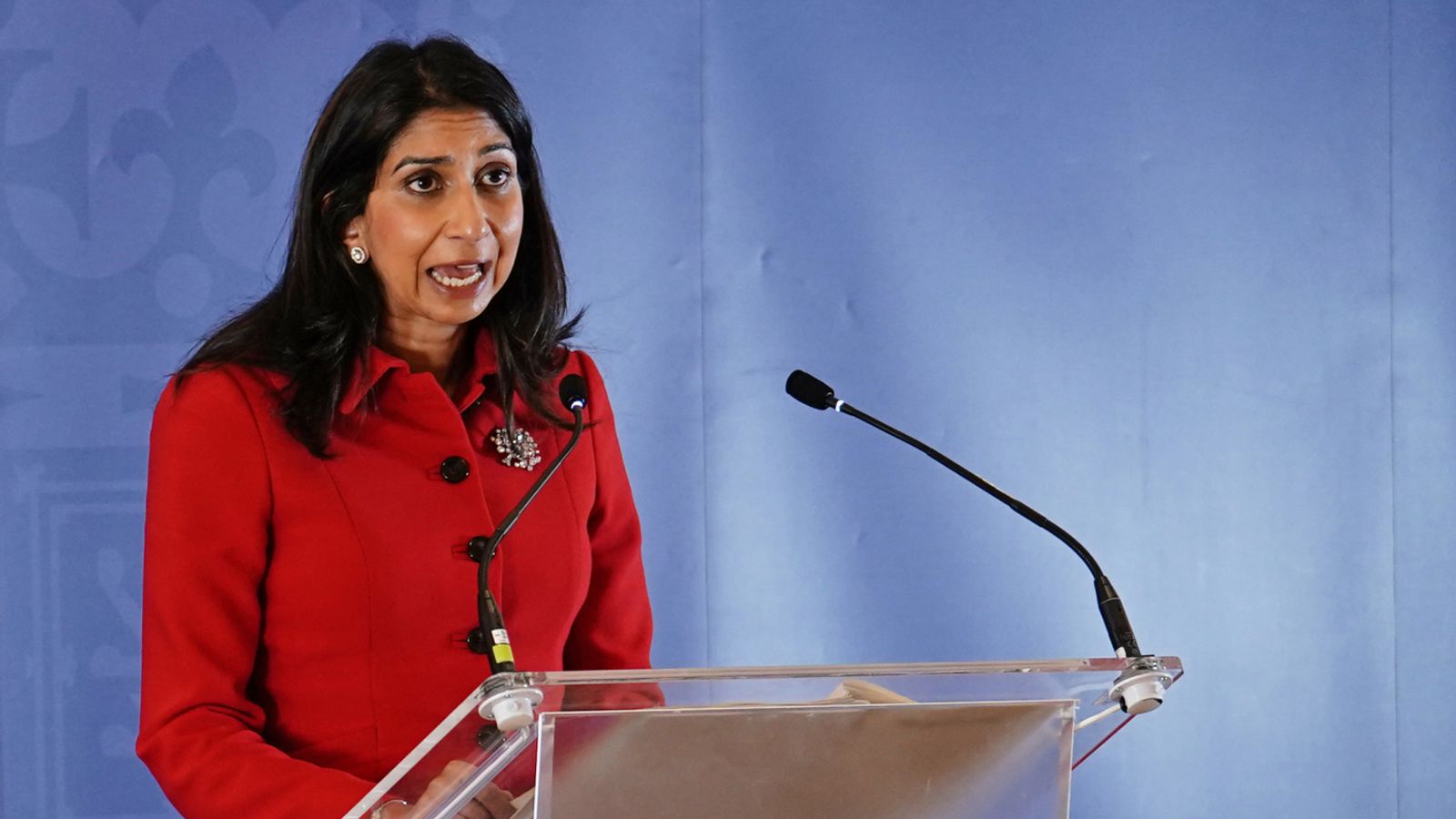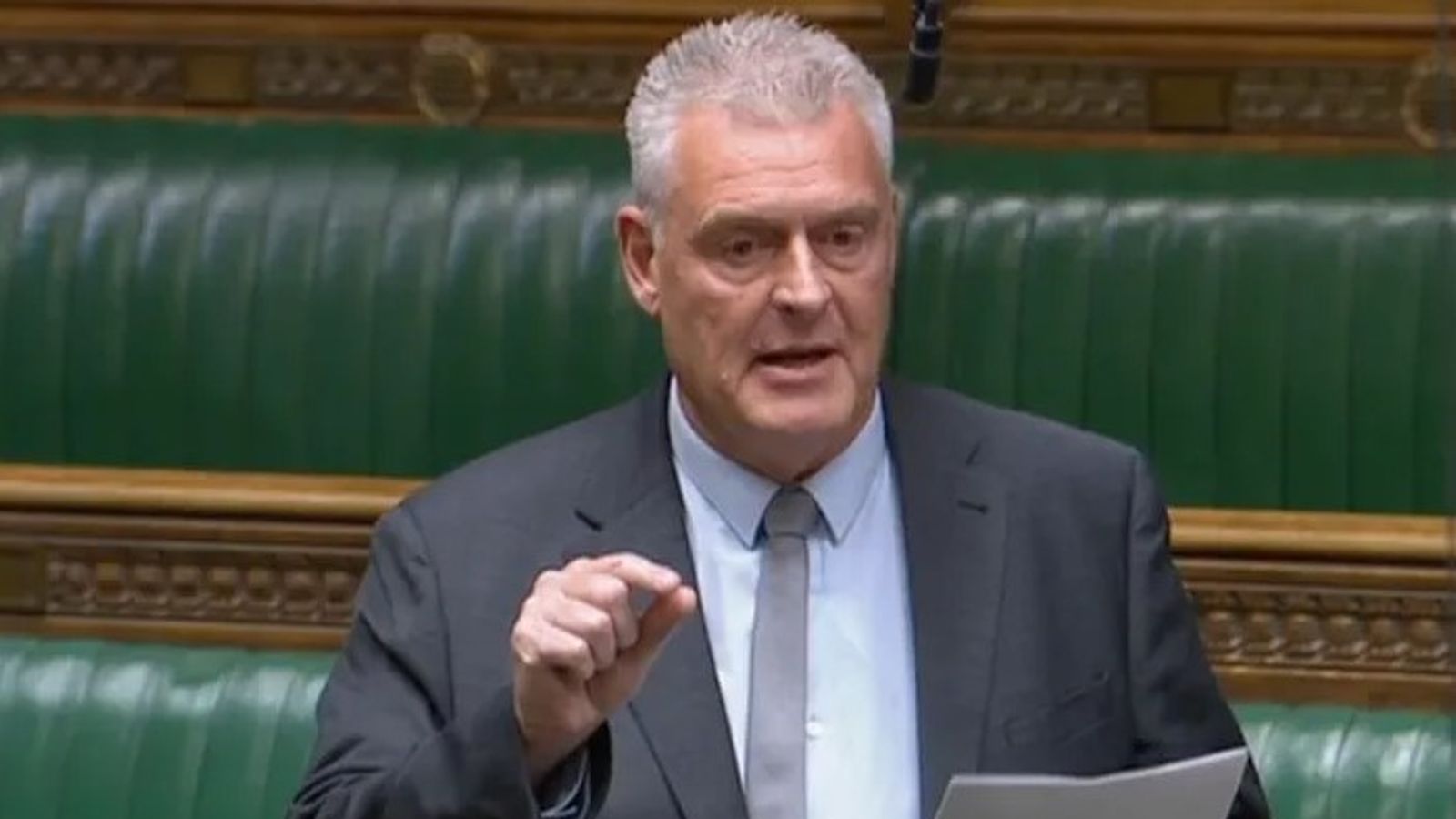Risk of terrorism ‘rising’ says Home Secretary Suella Braverman as government launches review of counter terror

The risk from terrorism is “rising”, Home Secretary Suella Braverman has said.
The cabinet minister was speaking as the government published a review of its counter-terrorism strategy, CONTEST, which has been updated for the first time in five years.
Ms Braverman said: “We now face a domestic terrorist threat which is less predictable, harder to detect and investigate; a persistent and evolving threat from Islamist terrorist groups overseas; and an operating environment where technology continues to provide both opportunity and risk to our counter-terrorism efforts.
Politics latest: Rishi Sunak facing reshuffle dilemma
“We therefore judge that the risk from terrorism is once again rising.”
In a speech announcing the report, Ms Braverman added that the rise was from a “lower base”, and the risk is “not as high as a few years ago”.
The CONTEST strategy has been around since 2003, and was last updated in 2018 following the five terror attacks in 2017.
Since then, there have been nine terror attacks, which killed six people and injured 20 people – and a further 39 attacks were disrupted, according to the Home Office.
This year’s review highlighted how the “primary domestic terrorist threat” comes from “Islamist terrorism”.
Advertisement
It makes up “approximately 67% of attacks since 2018, about three quarters of MI5 caseload and 64% of those in custody for terrorism-connected offences” as of March this year.
The next most serious threat is right-wing extremism; the Home Office reckons this makes up approximately 22% of attacks since 2018, a quarter of MI5’s caseload and 28% of those in custody for terrorism-connected offences.
When it comes to Islamist extremism, the review states that there is a “diminishing” link between malefactors and “explicit affiliation and fixed ideological alignment” with any one group.
This is due to the “relative decline” in al Qaeda and the Islamic State (IS), also known as Daesh.
A shrinking in the number of Islamist figureheads and an increasingly online world means there are a greater number of “issues and grievances from a wider range of sources becoming influences and drivers” of terrorists.
For right-wing extremists, there is less organisation when compared to Islamic terrorists, according to the new review.
Rather than formal groups with a leadership structure and plans to seize territory, extreme right-wing groups tend to consist of “informal online communities which facilitate international links”.


